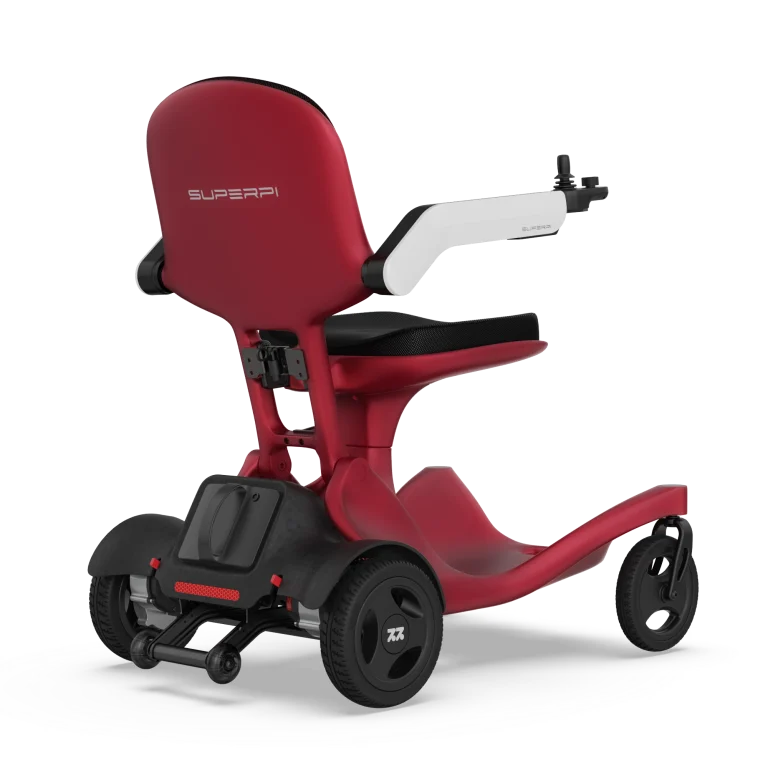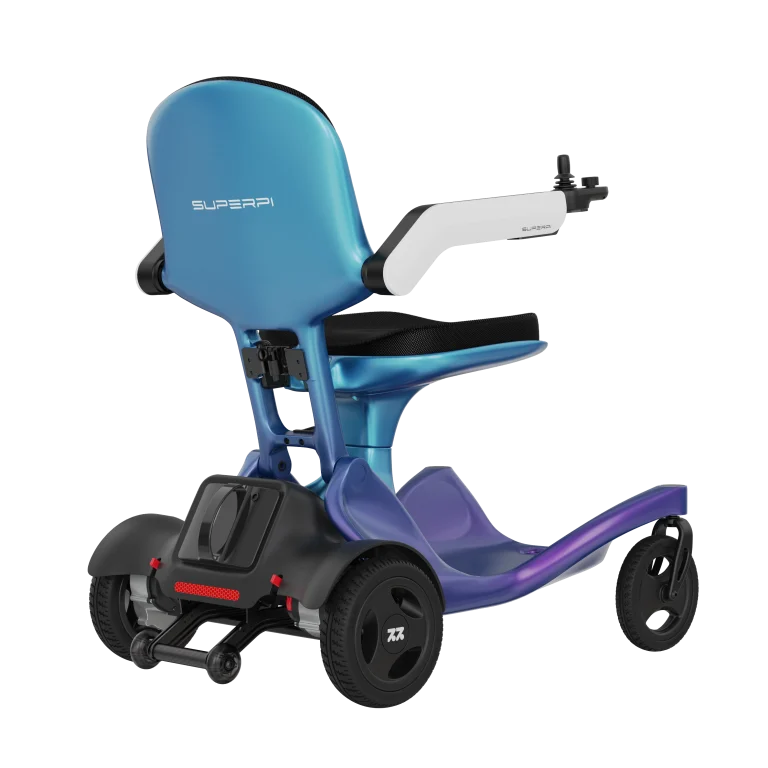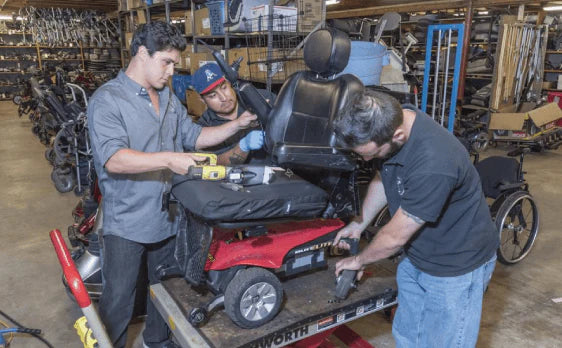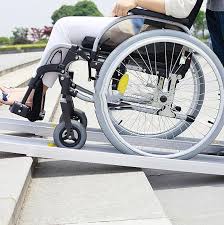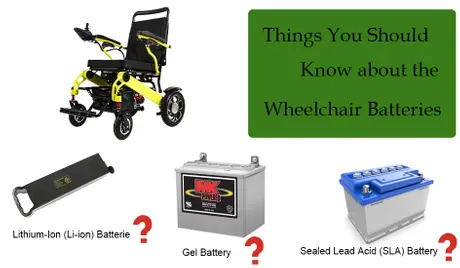Understanding Power Wheelchairs
Definition and Purpose of a Power Wheelchair
A power wheelchair, also called a powered wheelchair, is a motorized device. It helps people with limited movement or disabilities. It has electric motors and batteries. These let users control their motion easily with a joystick or other controls. This tool gives users more freedom and ease. They can move around their spaces smoothly.
Power wheelchairs come in different types. These include front-wheeled, mid-wheeled, and rear-wheeled models. Each has special features and benefits. These differences make it important for users to know which type fits their needs best.
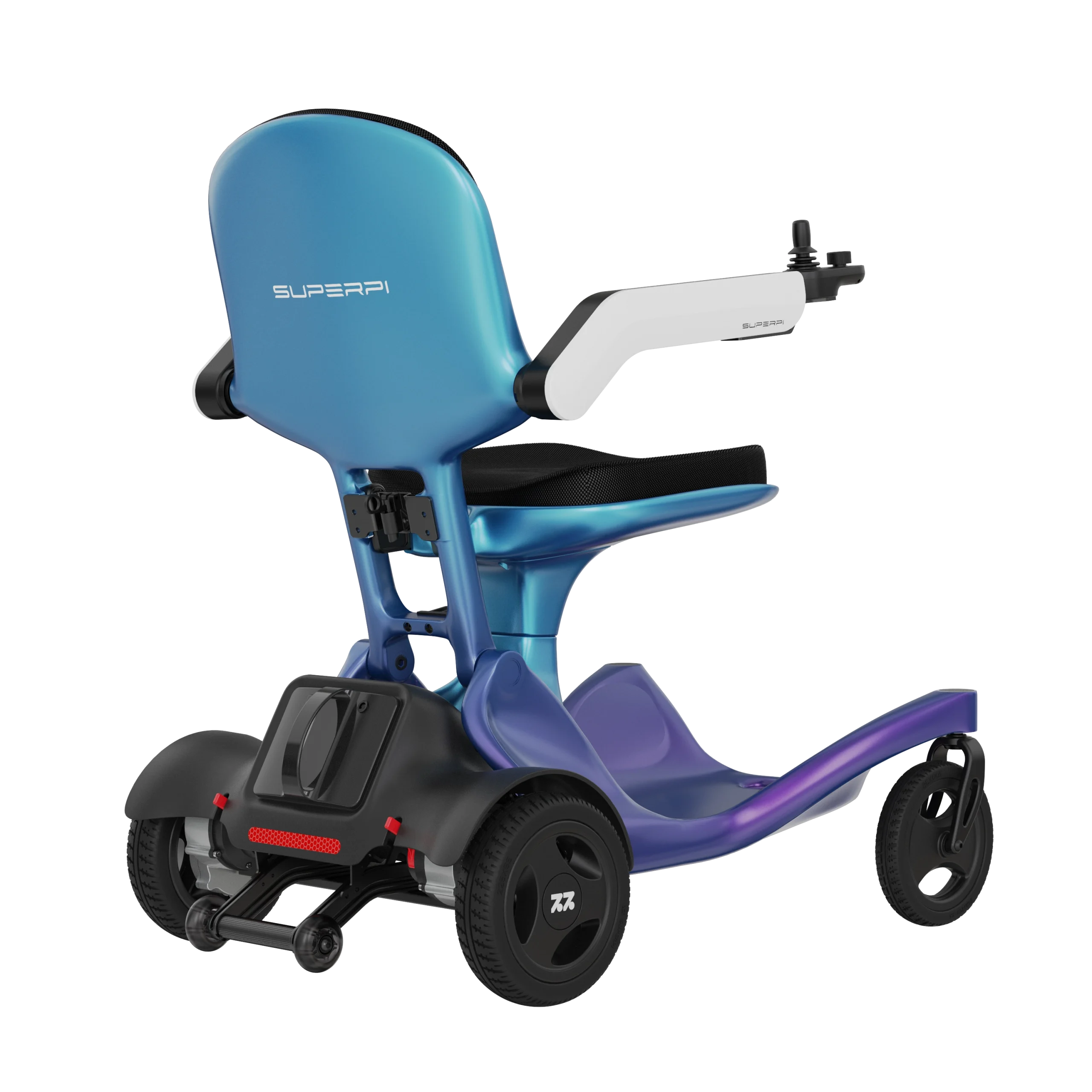
Key Components and Control Features
Power wheelchairs have several main parts. These include motors, batteries, seats, and control systems. The joystick is the most common control tool. It helps users guide the wheelchair’s movements easily. Some models have extra features. These include automatic brakes or collision avoidance systems. They add safety.
The Role of Drive Wheel Configuration in Performance
The drive wheel setup matters a lot. It can be front-wheel, mid-wheel, or rear-wheel. This affects how the wheelchair moves, stays steady, and performs. For example, front-wheel drive models are great on rough ground. They can climb obstacles well. Mid-wheel designs are best for indoors. They have a tight turning circle. Rear-wheel setups are good for steady straight movement and faster speeds over long distances.
Front-Wheel Drive Power Wheelchairs
Features of Front-Wheel Drive Models
Front-wheel drive power wheelchairs have their motor at the front. This setup lets the big front wheels pull the chair forward. Smaller rear wheels give support.
Advantages of Front-Wheel Drive
These models work well on uneven surfaces. They handle gravel or grass easily. The large front wheels climb obstacles smoothly. They provide steady weight balance for a comfy outdoor ride. However, they have a wider turning circle than other types. This can make them less suitable for tight indoor spaces.
Considerations When Choosing Front-Wheel Drive
When picking this type, think about its outdoor strengths versus its less nimble indoor use. Users should also check if they need strong obstacle-climbing features for daily tasks.
Mid-Wheel Drive Power Wheelchairs
Features of Mid-Wheel Drive Models
Mid-wheel drive power wheelchairs have the motor under the user. It is in the center of the chair. This setup balances weight across all wheels.
Benefits of Mid-Wheel Drive for Maneuverability
Mid-wheel drive models are known for great indoor movement. Their tight turning circle makes them perfect for narrow halls or busy spaces. Also, these chairs offer smooth and steady turns.
Factors to Consider for Mid-Wheel Drive Selection
Mid-wheel designs are great indoors. But they may struggle on rough outdoor ground compared to front-wheel models. Buyers should think about where they will use the wheelchair most before choosing.
Rear-Wheel Drive Power Wheelchairs
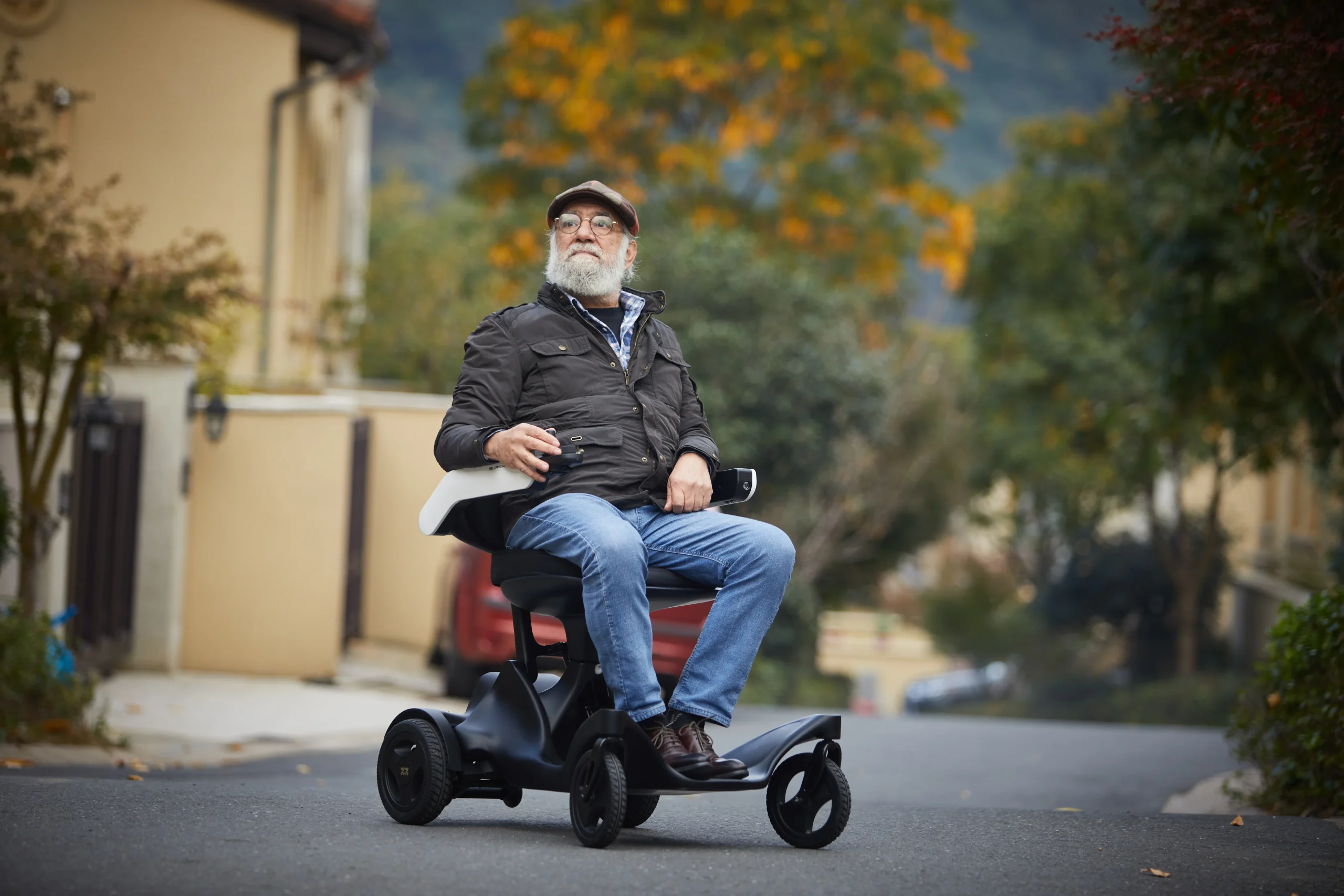
Characteristics of Rear-Wheel Drive Models
Rear-wheel drive power wheelchairs have motors at the back. This design pushes the chair forward. Smaller front wheels provide support.
Benefits of Rear-Wheel Drive for Outdoor Use
These chairs are known for steady straight movement. They can reach higher speeds. They are great for outdoor use over long distances. Their strong design supports heavier weights.
Important Considerations for Rear-Wheel Drive Users
Rear-wheel drive models often have larger turning circles. This makes them less practical in tight indoor spaces. Users should think about whether they need high-speed features. Or if they mainly plan to use their wheelchair outdoors.
Each type of power wheelchair has unique benefits. These match specific needs and lifestyles. Knowing these differences helps users pick a model. It improves both movement and comfort.
Comparing Features and Benefits by Usage Scenarios
Optimal Choices for Outdoor Mobility
Front-wheel drive power wheelchairs are very effective outdoors. They move well on uneven surfaces like gravel, grass, or slopes. The big front wheels climb obstacles easily. This gives users a steady and comfy ride. Also, these models balance weight well. This ensures a smoother trip on tough ground. However, users should note their wider turning circle. It may limit use in small spaces.
Ideal Options for Indoor Navigation
Mid-wheel drive power wheelchairs are perfect for indoor movement. They have unmatched agility. Their tight turning circle shines in small rooms or crowded areas. Balanced weight ensures smooth and steady motion. This makes them a great choice for users needing mobility at home or indoors. But mid-wheel designs may not do as well on rough outdoor ground compared to front-wheel models.
High-Speed and Long-Distance Applications
Rear-wheel drive power wheelchairs are known for steady straight motion. They can reach higher speeds. These features make them good for users traveling long distances or moving outdoors. Rear-wheel models have a strong design. They support heavier weights. This adds to their flexibility. However, their larger turning circle makes them less practical in tight indoor spaces.
Heavy-Duty Power Wheelchairs for Additional Support
Heavy-duty power wheelchairs are strong options for bigger users. They have improved performance features. These include higher torque and better battery life. These chairs are built to offer extra support and steadiness. They are ideal for users needing more durability and strength in their mobility devices.
Maintenance and Safety Guidelines for Power Wheelchairs
Effective Battery Care Practices
Proper battery care is key. It ensures the long life and performance of your power wheelchair. Always follow the maker’s rules for charging and caring for batteries. Avoid overcharging. This can shorten battery life greatly. Keep batteries clean and dry to prevent damage. Also, avoid extreme temperatures.
Cleaning and Proper Storage Techniques
Regular cleaning keeps your power wheelchair working well. Use a damp cloth to wipe the frame and parts. Avoid harsh chemicals that could harm it. When not in use, store the wheelchair in a cool, dry place. Keep it away from direct sunlight or extreme weather.
Routine Inspections and Addressing Common Issues
Check your power wheelchair regularly. Look for signs of wear or problems. Inspect tires, brakes, motors, and controls often. Fixing small issues quickly can prevent bigger problems later.
Selecting the Right Power Wheelchair for Individual Needs
Evaluating Personal Mobility Requirements
Checking personal mobility needs is the first step. It helps pick the right power wheelchair. For those needing more outdoor steadiness, a front or rear-wheel drive chair may work best. On the other hand, mid-wheel drive models suit tight indoor spaces better.
Weight Capacity and Durability Factors
Make sure the wheelchair supports the user’s weight comfortably. Rear-wheel drive models often have higher weight limits. This makes them good for heavier users.
Differentiating Between Indoor and Outdoor Use Models
Think about where the wheelchair will be used most. For indoor use, compact mid-wheel drive models are preferred. They are agile. For outdoor areas with rough ground, front or rear-wheel drive chairs perform better.
Understanding Battery Life and Range Expectations
Check how far the user needs to travel daily. Choose a model with enough battery capacity. Frequent travelers may need a chair with longer battery life.
Prioritizing Comfort and Adjustable Features
Comfort is very important. Look for features like padded seats, adjustable armrests, footrests, and user-friendly designs. These should match the user’s specific needs.
Overview of SUPERPI Wheelchair
SUPERPIER focuses on making smart mobility aids. These are tailored for older people seeking freedom through new solutions. The SUPERPI Model P2 is one of the lightest folding electric wheelchairs available. It is made from aviation-grade carbon fiber. It weighs only 20.5 kg without batteries. This offers great portability.
Its comfy seating includes high-density memory foam cushions. These fit closely with spinal curves. They also have shock absorption features. The Model P2 has powerful 250W*2 brushless motors. They can climb slopes up to 12 degrees smoothly. They clear obstacles up to 7 cm high.
The advanced smart control system includes automatic braking. It also has collision avoidance technology. This ensures safety in narrow spaces. The model has a remarkable 78 cm turning circle.
With a focus on quality, Super Pi partners with Fortune 500 companies. They use thorough testing methods. Users get dependable reliability. This is backed by strong after-sales services. Warranties cover main parts for two years.
For collaboration inquiries, dealership opportunities, or product demos, please contact us today

